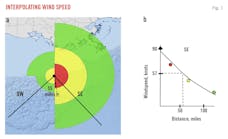Corrections were made to this story June 14.
Flaring of natural gas rose 3% year-to-year in 2018 to an estimated 145 billion cu m, the World Bank’s Global Gas Flaring Reduction Partnership (GGFR) disclosed on June 12. The growth was associated with increased US crude oil production, although US flaring intensity—the volume of gas flared per barrel of produced oil—remained low at 2.2 cu m, it said.
The worldwide flaring growth last year was equivalent to the total annual gas consumption in Central and South American countries, the GGFR reported.
It noted that in the US, flaring climbed 48% year-to-year as crude production rose 33%. “Satellite data indicate that increased flare volumes were concentrated almost exclusively in the shale oil basins in the Bakken in North Dakota and the Permian and Eagle Ford in Texas,” the GGFR said. “These areas saw rapid development in 2018, with shale oil production increasing by around 29% in the Bakken, 40% in the Permian, and 15% in the Eagle Ford.”
Countries struggling with conflict also experienced a gas flaring increase from 2017 levels, the GGFR said. “In Venezuela, gas flaring soared even as oil production declined sharply, indicating a state in crisis, similar to trends seen previously in Syria and Yemen,” it noted.
In Angola, gas flaring declined by 27% year-to-year during 2018. Associated gas that likely would have been flared was exported instead through an LNG plant, representing a positive development for the country’s strategy to reduce gas flaring, the GGFR said. In Syria, gas flaring fell by 42% from 2017 levels, suggesting restoration of more normal oil field operations following a sustained period of conflict, it said.
The GGFR is composed of governments, oil companies, and international institutions. The US National Oceanic and Atmospheric Administration and GGFR have developed the flaring estimates in cooperation with the Colorado School of Mines based on observations from advanced sensors in a satellite launched in 2012.
Contact Nick Snow at [email protected].

Nick Snow
NICK SNOW covered oil and gas in Washington for more than 30 years. He worked in several capacities for The Oil Daily and was founding editor of Petroleum Finance Week before joining OGJ as its Washington correspondent in September 2005 and becoming its full-time Washington editor in October 2007. He retired from OGJ in January 2020.

